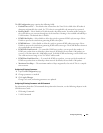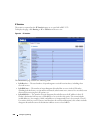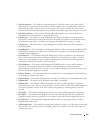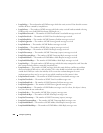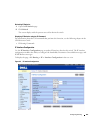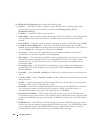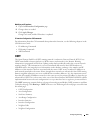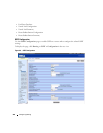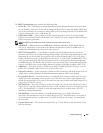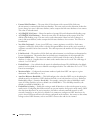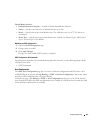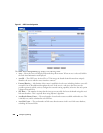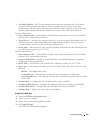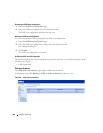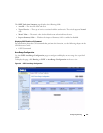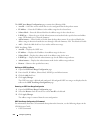
Configuring Routing 465
The OSPF Configuration page contains the following fields:
•
Router ID
— The 32-bit integer in dotted decimal format that uniquely identifies the router within
the autonomous system (AS). If you want to change the Router ID you must first disable OSPF. After
you set the new Router ID, you must re-enable OSPF to have the change take effect. The default value
is 0.0.0.0, although this is not a valid Router ID.
•
OSPF Admin Mode
— Select Enable or Disable from the drop-down menu. If you select Enable
OSPF is activated for the switch. The default value is Disable. You must configure a Router ID before
OSPF can become operational.
NOTE: Once OSPF is initialized on the router, it remains active until the router is reset.
•
ASBR Mode
— Reflects whether the ASBR mode is Enabled or Disabled. Enable implies that the
router is an autonomous system border router. Router automatically becomes an ASBR when it is
configured to redistribute routes learnt from other protocol.
•
RFC 1583 Compatibility
— Select Enable or Disable from the drop-down menu to specify the
preference rules that are used when choosing among multiple AS-external-LSAs advertising the same
destination. If you select Enable, the preference rules are those defined by RFC 1583. If you select
Disable, the preference rules are those defined in Section 16.4.1 of the OSPF-2 standard (RFC 2328),
which prevent routing loops when AS-external-LSAs for the same destination have been originated
from different areas. The default value is Enable. To prevent routing loops, you should select Disable,
but only if all OSPF routers in the routing domain are capable of operating according to RFC 2328.
•
ABR Status
— The values of this are Enabled or Disabled. Enabled implies that the router is an area
border router. Disabled implies that it is not an area border router.
•
Opaque LSA Status
— Set this parameter to Enable if OSPF should store and flood opaque LSAs. An
opaque LSA is used for flooding user-defined information within an OSPF router domain.
•
Exit Overflow Interval
— Enter the number of seconds that, after entering overflow state, the router
should wait before attempting to leave overflow state. This allows the router to again originate non-
default AS-external-LSAs. If you enter 0, the router does not leave Overflow State until restarted. The
range is 0 to 2147483647 seconds.
•
SPF DelayTime
— Enter the number of seconds, Delay time (in seconds) is the time between when
OSPF receives a topology change and when it starts an SPF calculation. It can be an integer from 0 to
65535. The default time is 5 seconds. A value of 0 means that there is no delay; that is, the SPF
calculation is started immediately.
•
SPF HoldTime
— Enter the number of seconds, minimum time (in seconds) between two
consecutive SPF calculations.It can be an integer from 0 to 65535. The default time is 10 seconds. A
value of 0 means that there is no delay; that is, two SPF calculations can be done, one immediately
after the other.
•
External LSA Count
— The number of external (LS type 5) LSAs (link state advertisements) in the
link state database.



